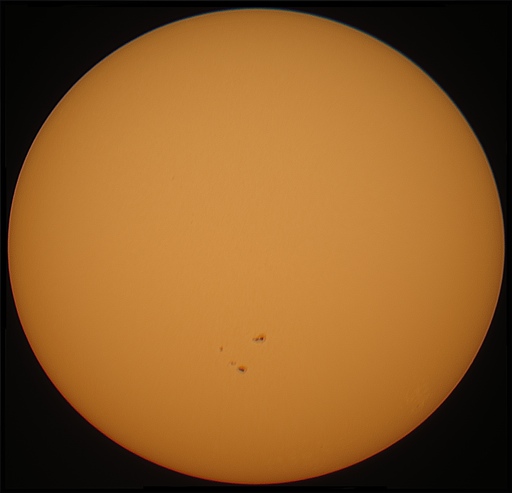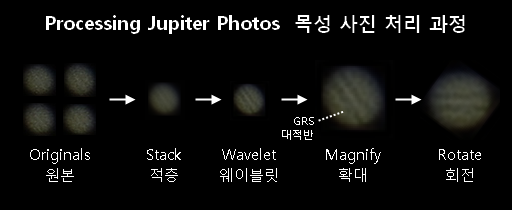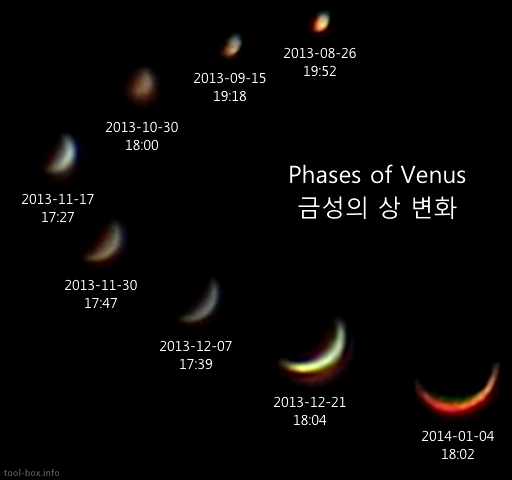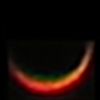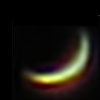Weekend Sun
Posted by Wesley onSun is measured to be the most perfectly round sphere occurring in nature. But as the Sun sets over the horizon, it looks more "squished" than usual due to atmospheric refraction. This photo was taken when the Sun's altitude was merely 3.27 degrees.
You can still see the sunspots just fine - AR11960 (top; "sunspot 1960") and AR11959 (bottom; "sunspot 1959") are visible at the lower area. The light blemish at the lower right edge is the AR11957.
Device: Canon SX50 HS
Settings: 1200mm - ISO 80 - 1/40s - f/6.5
Filters: Baader AstroSolar Safety Film
Time: 2014-01-26 17:25 KST
Location: Suwon, Korea
79 photos stacked with RegiStax 6.1.0.8
